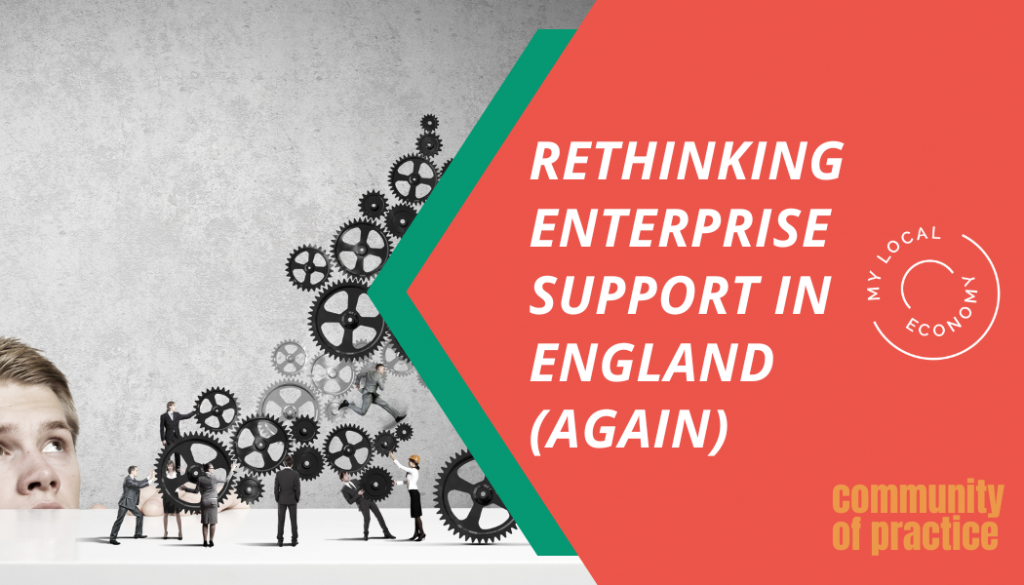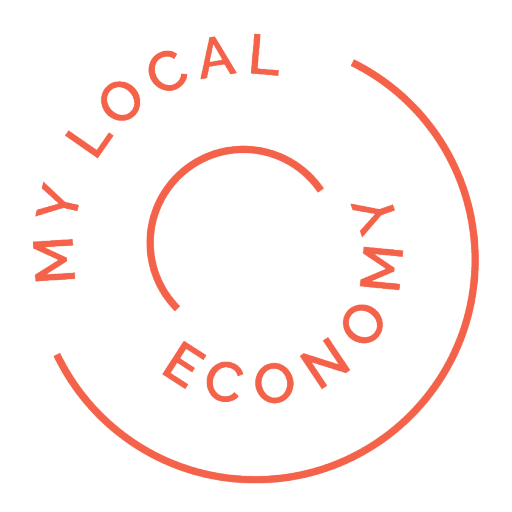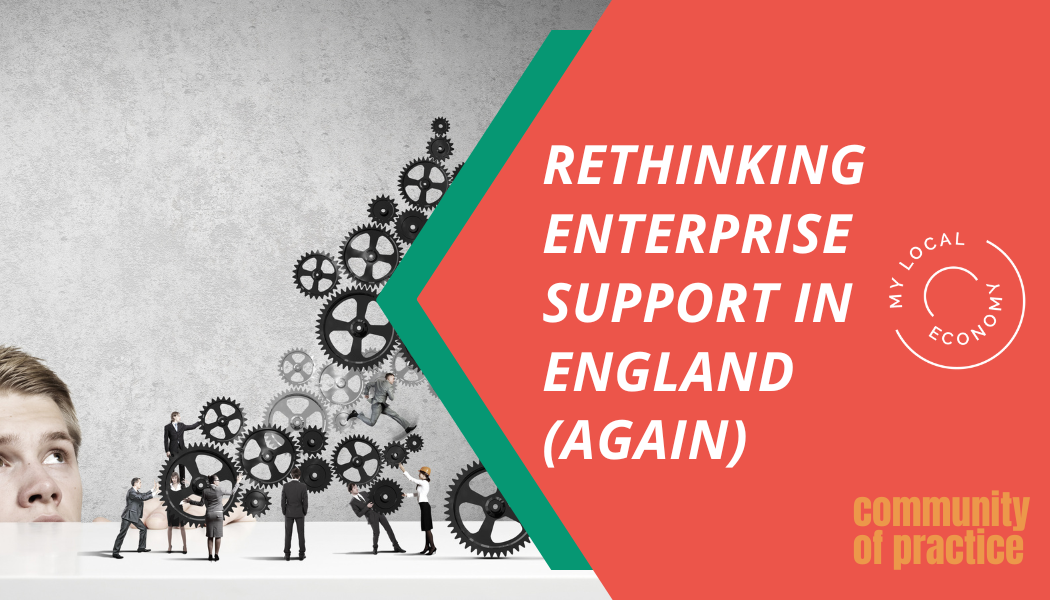
With the introduction of the UK Shared Prosperity Fund, the winding down of ERDF and the cutting of funds for Growth Hubs – how do we deal with these changes and continue to support businesses in our local economies?
I’ve lost count of the number of enterprise support restructurings I’ve been in – it’s somewhere between 5 and 10. I’ve helped to develop new enterprise structures in quite a few localities and regions. Here are my top 10 tips and observations.
1. to 5. – Setting out needs and scoping out solutions
1. Focus on what you really want to achieve
To be honest, I recommend starting with a fresh view at the moment. By that I mean – set our your major ambitions, priorities and objectives as the starting point. There are many good initiatives out there, but there is no logical service model or policy case for provision up to this point. The current business support landscape has been iterative – it has not been logically planned out. Further, there is the memory of quite extensive methods and modes of business support that existed before 2010. What we see are very time limited initiatives in all cases, each jostling about for position, whilst local stakeholders and partnerships worry about the ‘front end’ – promoting and coordinating business access to a fragmented array of initiatives and services.
I’d start by asking what the local economy needs. Enterprise support is not a universal public service, there is no public service entitlement to advice, information or support. You can choose to focus on any particular need – whether its entrepreneurship in deprived communities, or for women or ethnic groups. Or it might be to encourage more growth businesses in growing industries. This needs some careful research and analysis.

2. Choose carefully where to invest – local priorities vary, and the scope for displacement and deadweight is immense
Choosing which businesses to prioritise can be a bit of minefield at times. Investing in businesses to help them innovate, diversify and grow can be less displacing, particularly if they are involved in new technologies and/or markets. Investing in public goods – those that any business can benefit from, such as a business information resource or network – can also have lower levels of displacement. By contrast, investing in local retail businesses can be highly displacing. Yes, it may be good for the high street, but you can help retail businesses and meanwhile push out sales or survival of other retail businesses that have not been supported.
Deadweight occurs when the public sector funds what the business would have done anyway. For example, giving a public grant to fund something, when the business could have got a perfectly good commercial loan – is deadweight.
Generally public funding is for things that the market won’t provide – such as public goods, or risky investments in new markets that might have high growth potential, but can’t get a bank manager interested.
3. One stop shops and referral systems need something to broker to – if this model is still relevant or needed
If you do not have a decent array of support sources and programmes behind the one-stop-shop – then its likely this is not a sustainable approach. Previous models, such as Growth Hubs – had some support to signpost and broker businesses to, but by no means was this comprehensive.
If there are only a few core business support products and priorities, now that the realities of the new budget are apparent – perhaps an online and marketing prescence is best designed around that, rather than the traditional concern for helping businesses through the ‘confusing’ array of business support provided. If there’s far less support priorities and resources – then confusion isn’t going to be an issue.
4. Core services – with different channels of entry
The support and specialist advice needed are usually the same, but the channels and methods of recruiting businesses will be different. Ethnic minority and women businesses are important, different industries are important – but often the type of advice and support will be the same – whether its finance, HR, marketing, branding, leadership development, innovation or product development. What matters is that all businesses know about and can access the support.
What are the potential solutions? here’s a few examples…
- Segment the marketplace – what are the needs? Who are the users? How are they different in how they look for, access, and use support?
- Help navigating through the business advice required
- Customised marketing to different segments – we used to refer to these as channels. Sometimes the channels would route to the same source of support or provider
- Push more resources into networking with and engaging groups and segments you want to address

5. Don’t rely on government to point the way
As I commented in 2019 – there is a yawning gap in terms of a coherent enterprise policy from HM Government. We have had to develop local enterprise strategies and policies of our own, against a fairly fragmented and poorly developed national policy framework. When government policy and funding switches over very short timescales – as it has done repeatedly – from one priority to another, localities are left to pick up the pieces. These funding switches occur over short time periods (2-3) years, and sometimes even within the current funding agreement. This has a number of consequences: closing down services that local businesses liked and used, perceptions of unfair access to support services, and brand confusion.
6. to 10. – designing delivery
6. Curate and combine the best of the public and private sector
There’ll always be a range of advice and support offered in the public and private sector. The worst thing to try to do is to reform or restrict the support! People get preoccupied with duplication. Sure, why run two similar exporting programmes? But you can’t stop private initiatives. Variety often provides innovations, provides adaptation for different uses or users. Gordon Brown in 2006 announced that he wanted there to be only 30 business support products, alarmed that there were 3,000 government supported products. I had to laugh at the time because this didn’t include local authority, or private support products (which could have added an extra zero on the end of the 3,000)!
What are the potential solutions? here’s a few examples…
- Curate the best content, support and providers – be the expert filter
- Don’t try to narrow or ‘productise support’ – except your own. The market is too big to constrain
- Recognise that in the internet age – people are able to navigate to solutions that they best think will suit them
7. Content is king and you can’t broker businesses to support that doesn’t exist
Businesses are fairly harsh judges of enterprise support. I’ve dealt with and used a fair number of Growth Hubs (local enterprise support portals in England) in my time. Some are good, and use very intelligence web-based systems to filter what the business issue is, the type of business, and matching this to advice, information and support. Others are websites cluttered with public-sector jargon and lists of grants available. At the root of a good website is good content, that is curated and targeted at the right business, and communicated in a language, style, and structure that a business will understand.
8. Local variations will apply – and that’s why we need locally focused support that draws in national resources where this adds value
The mix of enterprise start-ups, growth, and strength of entrepreneurship is highly variable between localities. Some localities remain dominated by larger firms (which is not necessarily a drawback in some cases). As previously mentioned – developing a good understanding of the business base, supply chains entrepreneurship in your locality is needed in order to develop appropriate enterprise support provision that will help with economic growth and development.
9. For growth – winners pick themselves
Winners pick themselves: If you want to support businesses with growth potential – you need a brand or gateway which appeals to them and allows them to reveal their ambitions to you. Instead of trying to find them, lead them to you. Why not say “are you a small business with growth ambitions? Contact us to access up to £10,000 worth of advice and support”? That would work. What they won’t do is contact you through a brand which is they associate with general business support for the masses.
10. Make much better use of social media, apps, and digital content
The rise of social media hasn’t been used to great effect in business support: I’m sure there are some good individual examples of Growth Hubs using social media. However, anyone under the age of 25 thinking about starting a business is going to look at YouTube before they call a Growth Hub.
What are the potential solutions? here’s a few examples…
- Curate the best YouTube, instagram et al content
- Use YouTube, social media, to appeal to the target beneficiaries – e.g. young people
- Develop your own YouTube content if there are gaps
About Glenn
Glenn runs his own consultancy, Mylocaleconomy. We help local leaders translate their economic ambitions into winning advocacy and solutions that get funded. We work all over the UK – from the Highlands of Scotland to Wales, Bristol, Teeside, North East England, Gloucestershire, London, Cambridgeshire and Sussex.
We love challenging assignments, complex opportunities, intractable problems. Our vocation is to help city, region and local economies succeed and for prosperity to be sustainable and shared.
Get in touch via LinkedIn messaging or the contact form on our website.


